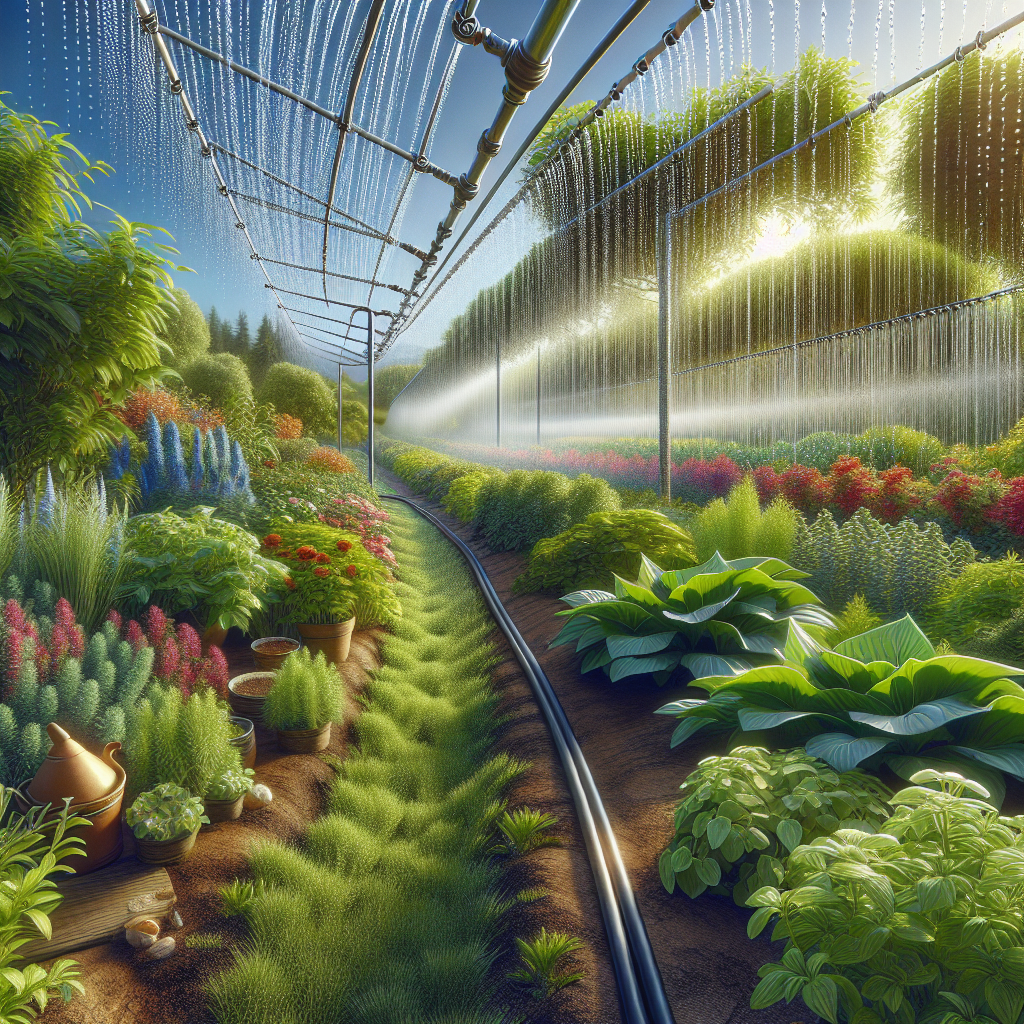Harness the Power of Slow Drip Irrigation for Lush Plants
Introduction:
When it comes to maintaining a beautiful garden or landscape, proper watering is key. One of the most effective ways to ensure lush and healthy plants is by using slow drip irrigation. In this article, we will explore the benefits of slow drip irrigation and provide a guide on how to harness its power for optimal plant growth.
What is slow drip irrigation?
Slow drip irrigation is a technique that provides water directly to the root zone of plants at a slow and consistent rate. Unlike traditional sprinkler systems or hand watering, which can lead to uneven water distribution and wastage, slow drip irrigation ensures that water reaches the roots where it is needed most efficiently.
Benefits of slow drip irrigation:
1. Water conservation: Slow drip irrigation significantly reduces water waste by delivering water directly to the roots without evaporation or runoff. Unlike sprinklers that can lose water due to wind or inefficient distribution, slow drip systems can save up to 50% more water.
2. Deep root growth: By providing water directly to the root zone, plants develop strong and deep root systems. This leads to healthier, more resilient plants that are better equipped to withstand drought conditions.
3. Reduced weed growth: Slow drip irrigation targets specific areas around plants, minimizing water exposure to surrounding areas. This helps reduce weed growth as weed seeds are less likely to germinate without sufficient moisture.
4. Prevention of soil erosion: Since slow drip irrigation delivers water slowly and evenly, it prevents soil erosion caused by heavy watering or rainfall runoff. The controlled flow helps retain moisture in the soil and promotes healthy plant growth.
5. Time-saving: Once installed, slow drip systems require minimal maintenance and can be easily automated using timers or moisture sensors. This frees up time for gardeners and reduces the need for frequent watering.
How to implement slow drip irrigation:
1. Assess your garden’s needs: Before installing a slow drip system, evaluate your garden’s layout, soil type, and plant water requirements. This will help determine the number of emitters, flow rates, and spacing needed for optimal irrigation.
2. Choose the right equipment: Slow drip irrigation systems consist of various components such as tubing, emitters, filters, valves, connectors, and timers. Select high-quality materials that are durable and suited to your garden’s specific requirements.
3. Prepare the area: Clear the garden beds or landscape area of any debris or weeds before installing the system. This ensures a clean and suitable environment for proper irrigation.
4. Lay out the tubing: Lay out the main supply line along with smaller tubing to reach individual plants or groups of plants. Position the tubing close to the root zone but avoid placing it too close to prevent damage from digging or gardening activities.
5. Install emitters: Attach emitters to individual plants or groups of plants according to their water needs. Adjust flow rates based on plant requirements and soil conditions; for example, sandy soil may require higher flow rates than clay soil.
6. Test and adjust: After installation, conduct a test run to check for any leakage or faulty connections. Make necessary adjustments to ensure even water distribution among all plants.
7. Monitor and maintain: Regularly inspect your slow drip system for clogs in emitters or tubing and replace or clean as needed. Adjust watering schedules based on seasonal changes and plant growth patterns.
Conclusion:
Slow drip irrigation is an effective technique that allows you to conserve water while promoting lush and healthy plant growth in your garden or landscape. By providing water directly to the root zone at a slow and consistent rate, this method minimizes waste, reduces weed growth, prevents soil erosion, promotes deep root growth promotes deep root growth ,deep root growth ,and saves time in maintaining your garden . Implementing a slow drip irrigation system requires careful planning and installation but offers long-term benefits for both your plants and the environment. Harness the power of slow drip irrigation today and enjoy the beauty of a thriving garden.













